Heat Stress in the Workplace
Australia has a large variation in climates from the hot and steamy tropical conditions in the far North to the temperate South. Working in these conditions can sometimes be challenging due to the effects humidity and radiant heat can have on the body.
The risks of working in tropical and arid areas are generally well known and usually controlled. However in Southern areas heat stress is generally given less consideration and therefore usually not as well controlled.
Temperature variations, experienced as heat waves in the Southern regions of Australia, may present a greater risk to workers with insufficient time to acclimatise to the conditions and with less capacity of dealing with the impacts.
Climactic conditions are not the only hazard with the potential to bring about symptoms of heat stress (i.e. heat strain) in workers, heat sources in the work environment such as furnaces, boilers and ovens, can also be a significant source of thermal stress and other work factors such as the wearing of PPE, high physical workloads and reduced air movement can also have an impact.
- Heat rash (prickly heat)
- Cramps
- Fainting
- Heat exhaustion (clammy moist skin, weakness or extreme fatigue, nausea, headache, low blood pressure, weak pulse)
- Heat stroke (hot dry skin, rapidly rising body temperature, collapse, loss of consciousness, convulsions) a life threatening condition that requires immediate first aid and medical attention.
- Loss of grip while handling tools and objects due to sweaty hands
- The increased potential for slips, trips or falls from fatigue and loss of concentration
- Personal protective equipment not being used due to discomfort caused by heat or perspiration.
- Rescheduling work so the hot tasks are performed during the cooler part of the day
- Wearing light clothing that still provides adequate protection
- Appropriate work rest ratios
- Arranging for more workers to perform the job
- Provision of a cool rest area
- The use of mechanical aids to reduce physical exertion
- Isolation of people from hot processes
- Allowing workers to acclimatise
- The provision of cool drinking water including electrolytes when required
- Providing personal protective equipment (ice vests, heat reflective aprons etc)
- Provision of information, instruction and training
- Adequate supervision of workers
The most appropriate control or combination of controls will be dependent on the particular situation and may require a thermal risk assessment to identify the main factors that require control and that can be used to develop an effective thermal stress control plan.
If you’d like some assistance in measuring and reducing heat stress in your workplace, please give us a call on 1300 856 282.
Read about our Heat Stress Workplace Management services







